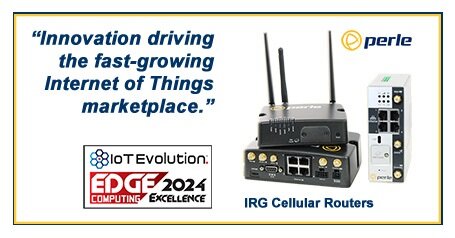
5 power delivery industry trends putting strain on networks
By Max BurkhalterApril 1, 2016
For most utility operators, power generation companies and similar energy industry stakeholders, the challenge has historically been creating ways to move energy across long distances. These organizations now must seriously consider how they can get data from one place to another. As network solutions become more important in the energy organization, utility operators and power generation companies face mounting pressure to upgrade cabling systems connectors and interoperability equipment like serial-to-Ethernet terminal servers.
Five of the trends driving this transformation include:
1. Smart grid
The smart grid has been an innovation catalyst across the energy industry as a whole. Smart meters, sensors, monitoring devices and background software can work in conjunction to deliver real-time data pertaining to energy use and grid conditions to utility leaders. This information can then be used to make better purchasing decisions when working with generation sites. It can also make it easier to integrate variable renewable resources into the grid by providing greater visibility into generation capacity and energy demand across the grid.

Connected grid components, like smart meters, are creating new connectivity challenges for utilities.
While this greater visibility into the grid - not to mention the added control over energy assets - can prove invaluable from an operational perspective, it isn't easy to achieve. All of the devices being used to add intelligence to the grid must be connected to the network, and while you may be able to use a wireless signal for some of these assets, you will also need to run cables to many locations and create backhaul for Wi-Fi or radio-based connections. These factors come together to make strategic network investments a vital component of any smart grid program.
2. Intelligent buildings
Like the smart grid, intelligent buildings are all about adding a layer of control and manageability to assets that traditionally required manual, in-person interactions. The challenge, from an energy provider perspective, is that smart buildings often feature microgrids and on-site generation assets. Essentially, data center operators, manufacturing plants and large commercial facilities are developing strategies to create and manage their own power. However, they will also maintain a connection to the grid to either get energy credits for excess power generated on site or as a backup resource.
This poses a major connectivity challenge for utility operators as they must measure the amount of energy moving between their assets and the intelligent buildings at all times, report that data back to the main office in real time and respond to changing operational conditions at a moment's notice. This creates a situation where network assets - even extended out to individual structures - become necessary as utilities work to integrate with smart buildings.
3. Energy storage
Utility operators are getting serious about energy storage solutions throughout the grid, particularly at substations where they can capture power during low-demand periods and make it available when demand spikes. This alleviates the burden on major transmission and distribution links and allows for more reliable, distributed power delivery throughout the grid. However, a successful energy storage system deployment depends on networking the battery array with other utility components to ensure it can understand the right times to distribute power vs. points when it should capture energy. Some of this can be done manually, but even then, you want an operator back in the office making that choice with a keyboard and mouse, not having to travel out to the substation.
"Utility operators are getting serious about energy storage solutions."
Connecting legacy serial network components at a substation to battery storage systems - and even smart grid components - requires terminal servers that can control data movement and provide secure, reliable interconnectivity. In particular, you must ensure that the serial-to-Ethernet converter can handle the unique demands created within a substation, such as sustaining operations despite being exposed to magnetic fields and electrostatic discharge.
4. Distributed generation
For a long time, utility companies primarily interacted with a few large-scale generation sites to source power for the grid, allowing them to get by with only a few communications channels within the larger utility setup. Distributed generation is rising, however, as geographically dispersed renewable generation site and sources like rooftop solar panels are increasingly integrated into utility grids. Like smart buildings, these new connection points require network access, and demand strategic infrastructure upgrades to ensure smooth data transit throughout the grid.
5. Emerging business models
With consumers taking control of their power with rooftop solar panels and new relationships emerging with distributed generation sites, utilities are being forced to reconsider how they manage rates and how they operate on the whole. This transition hinges on using data to drive more intelligent everyday operations as utilities must handle everything from demand response to energy sourcing in the most efficient way possible. Integrating data into processes is only viable if the network infrastructure can support data penetration throughout every phase of operations.
The energy sector is undergoing major changes, and utility operators are at the center of this shift. Strategic network upgrades can equip utilities to keep up with new operational and technical demands.
Perle offers a range of cost effective serial-to-Ethernet converters to help meet NERC-CIP compliance for the protection of critical cyberassets in substations. The IOLAN SDS HV/LDC Terminal Server is designed to meet harsh environments associated with Power Substations with attributes such as support for substation AC and DC voltage ranges, extended operating temperatures and meeting emission, immunity and safety approvals associated with substation IT equipment.



